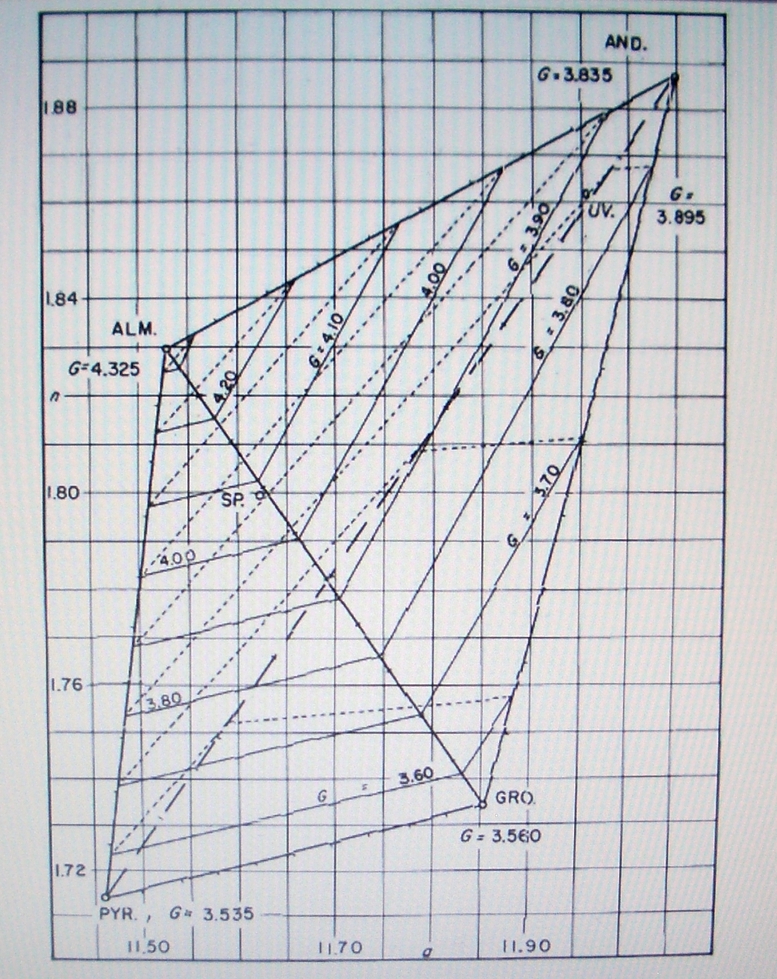The Winchell diagram for Garnets shown below was published by Dr. Horace Winchell in the May 1958 issue of the American Mineralogist. The diagram shows species abbreviations at the end member apexes, and plots refractive index against the unit cell length of a Garnet.
A unit cell is the smallest divisible unit of a mineral that possesses the symmetry and properties of the mineral. Unit cell length can be measured via X-ray diffraction.
1958 Winchell Diagram
_________________________________
Magnetism in Gemstones
An Effective Tool and Method for Gem Identification
Kirk Feral

